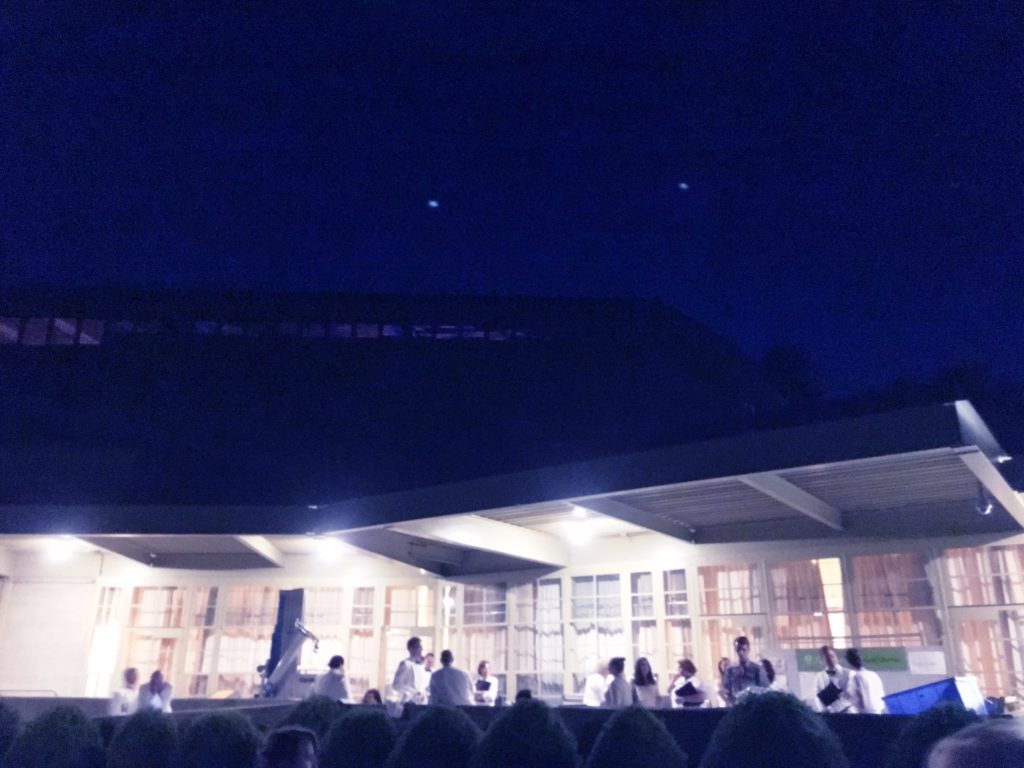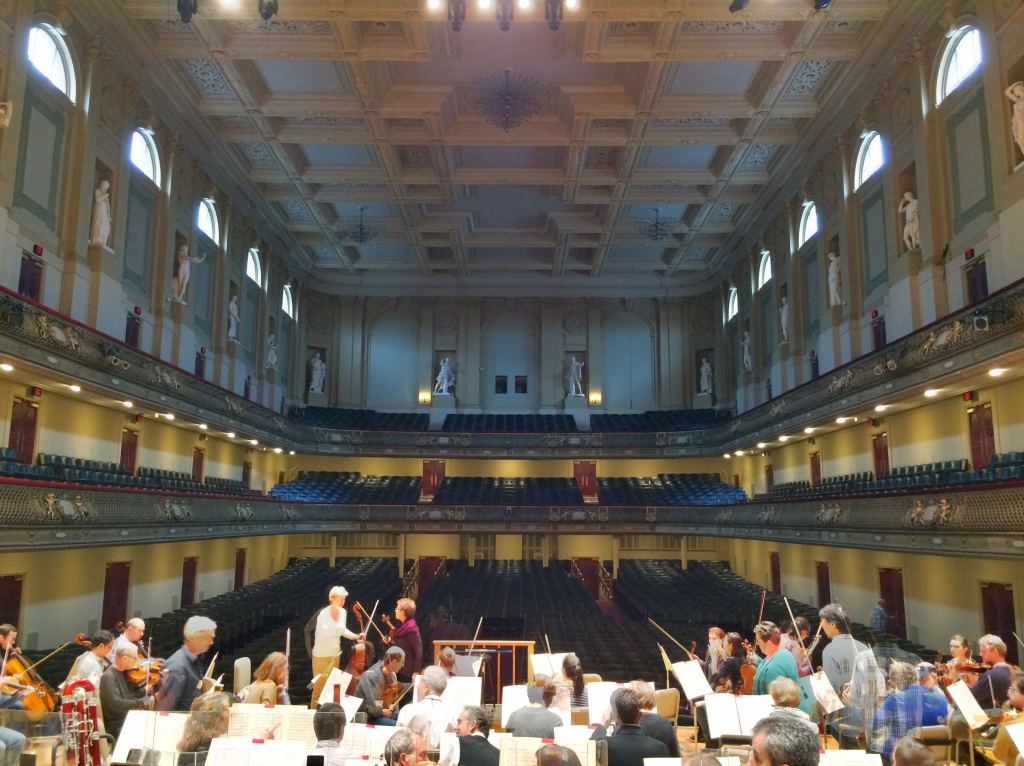
Coming back from Tanglewood is always challenging, and doubly so after a weekend like the one we had August 19 and 20. As I told a co-worker, it feels weird to walk into our office and not hear the magnificent Aida trumpets heralding our approach.
I go back out tomorrow for a Prelude concert (music set to the words of Shakespeare, mostly by British composers) and the Beethoven 9. Before I lose the music in my head, here are a few reviews that came in.
Rossini Stabat Mater with Charles Dutoit: I had never sung this piece before, and surprisingly the BSO had never played it at Tanglewood, and had only played it twice before, in 1974 and 2010. It turns out to be a fairly monumental work that blends sacred and operatic choral traditions, with some seriously intense solo writing (the tenor’s high note in the second movement comes to mind) along with choral writing that runs the gamut from amazingly delicate pianissimi to operatic descending lines. The fifth and ninth movements, sung a cappella, might have been my favorites.
Boston Classical Review (Lawrence Budmen): Dutoit, BSO serve up a Rossini rarity along with a heartening solo appearance at Tanglewood. “Under guest choral director James Burton, the Tanglewood Festival Chorus brought gleaming vocal sonority and subtly terraced dynamics to their a capella voicings of the ‘Eeia, mater’ and the lamentations in ‘Quando corpus morietur.’ Dutoit skillfully blended both chorus and vocal soloists with the orchestra’s highly charged playing.”
Boston Musical Intelligencer (James Prichard): Stabat Mattered at Tanglewood. “The choral work that opens the masterpiece (Stabat mater dolorosa) immediately established the high standard that was to prevail throughout the performance. Prepared by guest chorus director James Burton, the Tanglewood Festival Chorus once again displayed the smooth voice blending and comfortable control over a wide dynamic range that Boston audiences came to expect from them during the long tenure of founding director John Oliver.”
Verdi, Aida (Acts I and II) with Andris Nelsons: This was an astonishing piece even in performance of only half the opera, with a huge chorus and orchestra supplemented by offstage banda and, of course, the Aida trumpets. We were with a stellar crew of soloists including the stentorian Morris Robinson and Met soprano Kristine Opolais, who happens to be conductor Andris Nelsons’ wife. (The performance featured a total of 17 married couples among the soloists, orchestra and chorus, a fact which did not go unremarked-upon.)
Boston Classical Review (Lawrence Budmen): Uneven singing but thrilling moments in Verdi’s “Aida” at Tanglewood. “For the second night in a row (following a strong showing in Rossini’s Stabat Mater), the Tanglewood Festival Chorus was a tower of strength. The sumptuous sound of the female voices was particularly outstanding in a splendidly coordinated ensemble under guest choral director James Burton.”
Albany Times-Union (Joseph Dalton): A marriage of mighty forces for ‘Aida.’ “…as can often happen in a concert performance of opera, the inner workings of the score, especially the orchestration, were revealed as fresh wonders. Examples were the use of harps with the chorus, and an extended passage of dancing and swaying lines that started in the flutes and expanded into the entire woodwind section.”
Boston Globe (Jeremy Eichler): At Tanglewood, an ‘Aida’ both intimate and grand. “Bethany Worrell, a TFC member, did the chorus proud in her solo turn. Overall the TFC, this time prepared by James Burton, sang with a nuance and confidence that lifted its work notably above the level of other recent outings.”
Berkshire Eagle (Andrew Pincus): With Nelsons’ return, BSO goes adventuring. “The chorus, prepared by James Burton, was a consistent presence as troubled citizens of Memphis.”
Boston Musical Intelligencer (James Prichard): Celeste Nelsons, Opolais, Verdi, BSO, et alia. “Special mention is due soprano Bethany Worrell, a TFC member whose ethereal tone as the High Priestess enriched the texture of the production beyond the few measures of music in which we heard it.”


